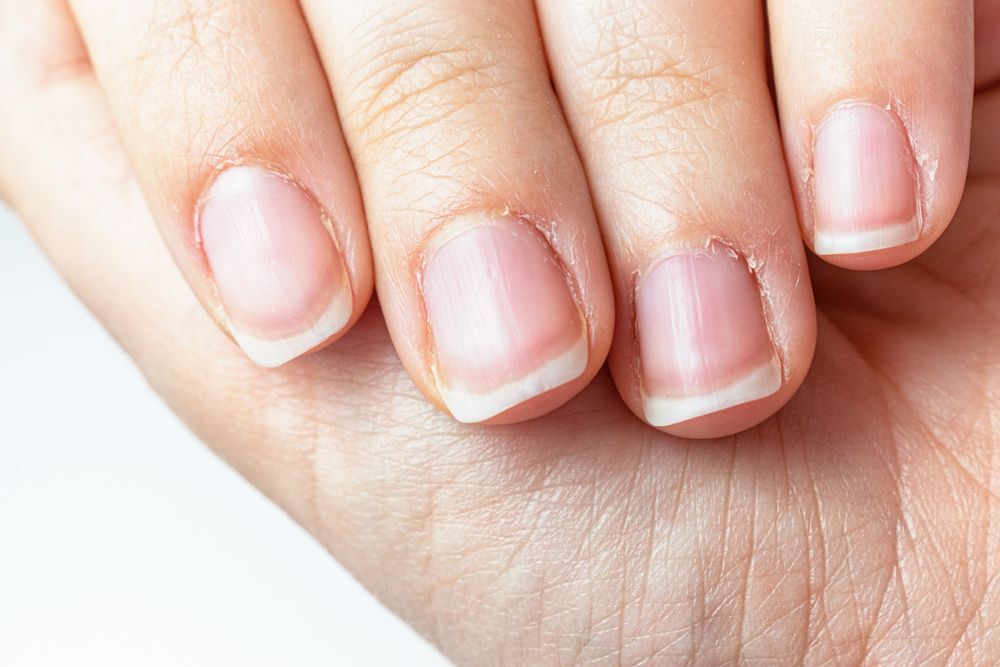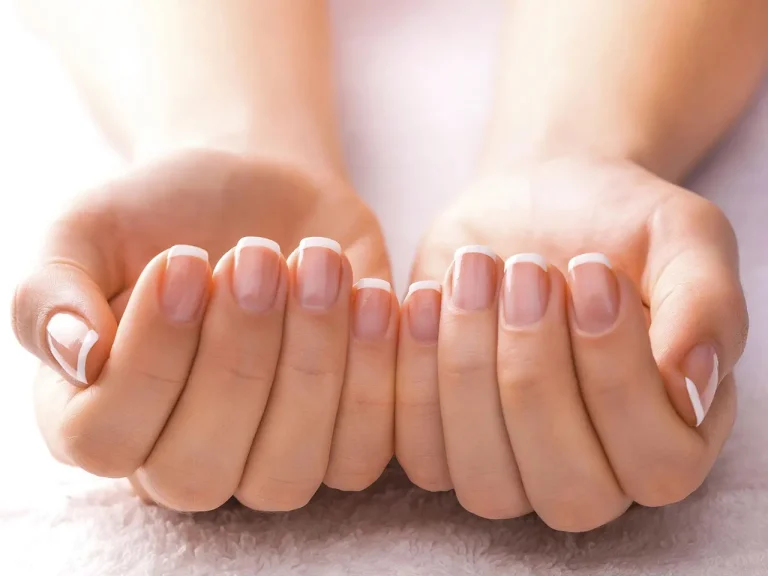Bad Cuticles Vs Good Cuticles: How to Identify?

As someone who loves doing my own manicures, I’ve become quite obsessed with nail health and achieving beautiful, strong nails. A big part of that journey has been learning about cuticles. Cuticles play a critical role in nail health, but they’re often misunderstood and mistreated.
In this article, I’ll share everything you need to know about identifying bad cuticles vs good cuticles, proper cuticle care, and how healthy cuticles contribute to overall nail wellness.
What Are Cuticles and What Purpose Do They Serve?
Contents
- What Are Cuticles and What Purpose Do They Serve?
- Key Differences Between Bad Vs Good Cuticles
- Proper Cuticle Care Tips
- How To Tell If You Have Healthy Vs Unhealthy Cuticles
- Understanding The Nail Matrix and Nail Plate for Healthy Nails
- DIY Cuticle Oil for Softer Cuticles This Winter
- Cutting Cuticles Can Do More Harm Than Good
- Can Cuticle Care Really Help Nails Grow Faster?
- Moisturize Cuticles to Prevent Brittle Nails and Breakage
- Conclusion: Show Your Cuticles Some Love for Beautiful Nails
First, let’s start with the basics. Cuticles are the thin layer of dead skin cells that overlap the nail plate at the base and sides of your fingernails and toenails. They help seal in moisture and protect the nails from bacteria, fungi, and other contaminants trying to enter through openings around the nails.
Cuticles have several important functions:
- Create a seal – Healthy cuticles seal in moisture and prevent entry of dirt and debris under the nails, acting as a protective barrier.
- Prevent infection – They form a tight seal to block germs from getting in and causing nail infections.
- Help nail growth – Cuticles contain stem cells that support growth and regeneration of the nail plate.
- Enhance appearance – Nicely shaped cuticles frame the nails for a tidy, well-manicured look.
So in essence, cuticles are the first line of defense for healthy, strong nails! When cuticles are damaged, nails become much more prone to issues like infections, splitting, peeling and breakage.
Key Differences Between Bad Vs Good Cuticles
Now that we know what cuticles do, let’s explore how to identify bad cuticles vs good cuticles. Unhealthy cuticles exhibit some clear visual cues:
Characteristics of Bad Cuticles
- Rough texture – Dry, cracked or peeling cuticles with hangnails
- Redness or inflammation – Swollen and irritated cuticles
- Overgrown cuticles – Extending onto the nail plate, separating the nail from the nail bed
- Hardened cuticles – Thickened, tough cuticles that are difficult to push back
- Discolored cuticles – Yellowish cuticles, indicating fungal infection
- Bleeding cuticles – Cuticles that are torn from aggressive pushing back
Many of these signs point to an underlying skin or nail condition like psoriasis, eczema, or nail fungus.
On the other hand, healthy cuticles have these characteristics:
Traits of Good Cuticles
- Pink translucent color – With a bit of visible blood flow
- Soft supple texture – Smooth cuticles that are flexible when lightly pressed
- Neatly framed cuticles – Hugging the nails without overlapping onto the nail plate
- No inflammation – No redness, swelling or pain
- No hangnails – Intact cuticle skin with no loose pieces or tearing
Good cuticles fit snugly against the nail, looking tidy and healthy. The skin should not be dry or hardened.
Proper Cuticle Care Tips
Now that you can identify bad cuticles, let’s talk about how to take care of them. Here are some key steps for cuticle care and maintenance:
- Moisturize daily – Apply cuticle oil or cuticle cream daily to nourish cuticles and prevent drying. Look for moisturizers with vitamin E, aloe, and shea or cocoa butter.
- Avoid cutting cuticles – Cutting can damage cuticles leading to infections. Instead, gently push back overgrown cuticles after softening them in warm water. Never tear or pick at hangnails.
- Protect hands when wet – Wear gloves for household chores and apply moisturizer after to prevent cuticles from drying out.
- Exfoliate gently – Use a granulated scrub or pumice stone gently on cuticles to remove dead skin. Do not scrub too hard.
- Get routine manicures – Have a professional tidy up cuticles carefully with proper tools. Ask them not to cut cuticles.
- Use cuticle nippers correctly – If you must nip hangnails, cut only the loose hanging piece, not the cuticle itself. Sterilize tools.
- Watch for signs of infection – Disinfect and seek treatment if you see redness, swelling pain, pus or nail separation.
A little TLC goes a long way in maintaining soft, healthy cuticles!
How To Tell If You Have Healthy Vs Unhealthy Cuticles
Checking your cuticles regularly helps spot problems early. Here’s what to look for:
Signs of Good Cuticles
- Smooth cuticle texture
- Subtle pinkish hue
- Flexible when pressed
- Framed tightly against nails
- No tearing, hangnails or bleeding
Healthy cuticles appear tidy and don’t extend onto the nail.
Signs of Bad Cuticles
- Dry, cracked or peeling skin
- Red, inflamed, painful
- Hardened, thickened cuticles
- Overgrown onto the nail plate
- Hangnails or bleeding
- Discolored – yellowish or brown
Unhealthy cuticles may indicate an underlying health condition requiring treatment.
Understanding The Nail Matrix and Nail Plate for Healthy Nails
To better understand how cuticles affect nail growth, we need to first understand nail anatomy. Here are the key parts of the nail:
- Nail matrix – This tissue under the cuticle contains cells that produce the nail plate. The matrix generates new nail cells that push older cells outward as new nail growth.
- Nail bed – The skin under the nail plate with ridges matching the nails surface pattern. The nail attaches to the nail bed.
- Nail plate – The hard surface made of compacted keratin that overlays the nail bed, forming the visible part of the nail.
- Lunula – The white half-moon shape at the base of the nail.
- Cuticle – The overlapping skin sealing the matrix and nail plate together at the base and sides.
This anatomy works together to generate nails. Damage to any part can affect nail growth.
DIY Cuticle Oil for Softer Cuticles This Winter
Winter weather can wreak havoc on cuticles, leaving them dry and cracked. Whip up this easy DIY cuticle oil to nourish them back to health:
Ingredients:
- 1 tablespoon castor oil
- 1 tablespoon olive oil
- 3-5 drops lemon essential oil
- 3-5 drops lavender essential oil
Steps:
- Add the castor oil and olive oil into a small glass jar.
- Mix in 3-5 drops each of lemon and lavender essential oils.
- Shake or stir well to fully blend the ingredients.
- Use a cotton swab to apply the oil over cuticles 1-2 times per day.
- Store in a cool, dark place. The oil lasts about 1 month.
The castor oil thickens and conditions cuticles while the olive oil moisturizes. Lavender and lemon oils give it a pleasant scent and antimicrobial properties. Use this nourishing oil all winter long to prevent painful cracked cuticles!
Cutting Cuticles Can Do More Harm Than Good
Many people think clipping off dead cuticles helps nails look nicer. However, cutting cuticles does more harm than good. Here’s why you should break this bad habit:
- Creates openings for bacteria to enter and cause infection
- Leads to hangnails that tear further when caught on fabric
- Can damage the nail matrix and impair healthy nail growth
- Causes irritation and even bleeding of sensitive cuticle skin
- Removes the protective seal cuticles provide to nails
It’s better to gently push back cuticles after softening in warm water or cuticle remover. Never clip into healthy cuticle tissue. Allow cuticles to frame the nails neatly without cutting them.
If a loose piece of cuticle tears off, you can carefully nip just the hangnail with sterile nippers. Take care not to pull or damage the remaining cuticle.
Let your cuticles be – lay off the clippers! Keeping cuticles intact ensures healthy, beautiful nails.
Can Cuticle Care Really Help Nails Grow Faster?
This is a popular misconception. There is no definitive scientific proof that tending to cuticles will accelerate nail growth. However, proper cuticle care is still critical for long, strong nails. Here’s why:
- Prevents nail damage – Healthy cuticles defend nails from external stresses that cause breakage.
- Maintains nail attachment – Cuticles keep nails firmly anchored to nail beds to avoid detachment.
- Reduces risk of infection – Intact cuticles prevent infectious germs from entering under nails.
- Supports nail matrix – The cuticle contains stem cells that aid growth of new nail cells.
So while cuticle care may not directly speed up nail expansion, it helps nails stay in optimal shape. Keeping cuticles in good condition can promote nail length by preventing issues that lead to breakage.
Plus, well-hydrated cuticles give nails a smooth seamless edge for faster visible growth. Don’t skip cuticle care – it’s a key step in the journey toward longer nails!
Moisturize Cuticles to Prevent Brittle Nails and Breakage
Here’s one way healthy cuticles can help your nails gain length – by keeping them strong and flexible to avoid breakage as they grow.
Dry, brittle nails are prone to cracking, peeling, and splitting. Inflexible nails under pressure snap off, breaking back to square one.
This is where moisturized cuticles come in. Hydrating cuticle oil or cream improves nail flexibility and resilience by:
- Sealing in natural moisture and oils
- Softening and conditioning the nail
- Protecting nails from dehydration
Well-conditioned nails resist chipping and bending as they extend. Regular cuticle moisturizing helps nails grow longer by preventing breakage.
For seriously brittle nails, use a thick conditioning treatment 1-2 times per week in addition to daily cuticle oil. Your nails will gradually strengthen and shed less, allowing greater length.
Don’t let dry, cracked cuticles sabotage your nail goals. Invest in some quality cuticle products and get on a schedule. Your nails will thank you!
Conclusion: Show Your Cuticles Some Love for Beautiful Nails
After reading this, you should have a thorough understanding of cuticle health and why it’s so vital for your overall nail care routine.
Here are the key takeaways:
- Know the difference – Learn to identify bad vs good cuticles based on appearance and texture.
- Moisturize daily – Hydrate cuticles with oil or cream to keep them soft and sealed.
- Avoid cutting cuticles – Prevent damage, infection and tearing by leaving cuticles intact.
- Protect hands when wet – Wear gloves for chores and apply moisturizer after to avoid drying.
- Get professional maintenance – Have a manicurist tidy up cuticles carefully during routine visits.
Remember, healthy cuticles are the foundation for strong, beautiful nails. Give them a little TLC and they’ll reward you with enviable nail goals! Show off those cute cuticles.

Founded by Sophia Rodriguez, IGXO Cosmetics is a PETA-certified, cruelty-free, and vegan makeup brand.





